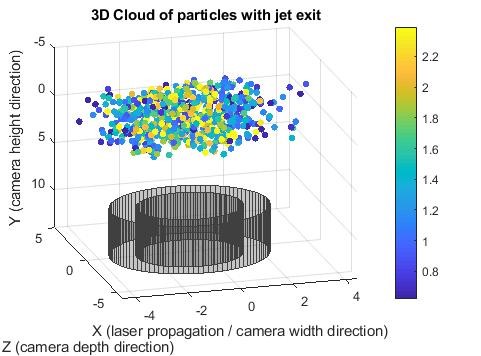3D measurements
Person in charge: Moritz Stelter
3D temperature and velocity measurements
Measuring temperature and velocity may sound like a simple task but especially if you want to know these quantities with high spatial resolution in turbulent gas flows there are multiple challenges. Tackling these challenges is part of a research project at LTT, where we develop a novel technique to simultaneously infer the three-dimensional velocity and temperature distribution in turbulent gas flows.
Why is measuring the velocity and temperature distribution in turbulent gas flows so challenging?
By nature, turbulent flows are characterized by three dimensional features. Unlike laminar flows, where a simplification to two-dimensional can be possible, a two-dimensional measurement cannot provide the full picture in turbulent flows. Vortices and wakes don't stretch equally along the spatial dimensions, so how should their size be measured using a non-3D technique? Same is valid for the temperature distribution within such flows. Just add a heater to your turbulent gas flow. The gas in direct contact with the heater will reach higher temperatures than gas further away. As the heater physically disturbs the flow, vortices and wakes will be formed downstream and mixing of warmer and colder fluid will occur.Capturing these processes in their entirety is not possible if measurements are conducted along one or two axes only.

3D measurements using phosphor tracer particles
To overcome these challenges we are developing a novel approach by merging the best of known velocimetry techniques like tomographic PIV and PTV with our group's expertise in phosphor thermometry. The result will be a novel method to simultaneously measure a flow's temperature and velocity field in all spatial dimensions.